Trees Birds Mammals Fish Amphibians Reptiles
Wild Algarve
Bookshop
Valeriana officinalis - Common Valerian
Phylum: Magnoliophyta - Class: Equisetopsida - Order: Dipsacales - Family: Caprifoliaceae
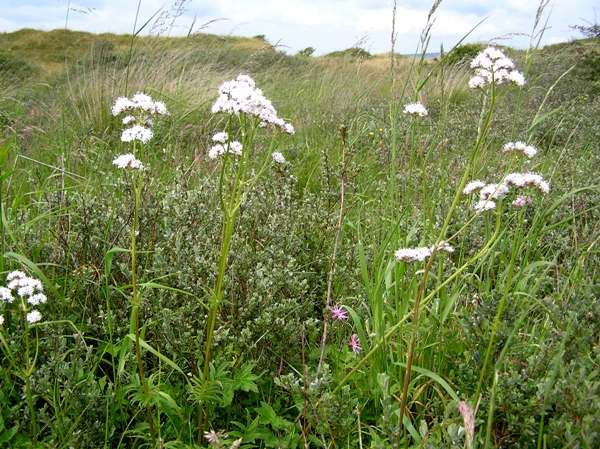
The flower heads may look rather like umbellifers, but Common Valerian is more closely related to the Teasel than to Wild Carrot, Hogweed and the other umbellifers (family Apiaceae).
Description
Valeriana officinalis can grow up to 2m tall, producing deep pink buts that open into fairly loose clusters of pink five-petalled flowers, the petals joined at the base to form a trumpet-like corolla. Common Valerian flowers are 4 to 5mm long.
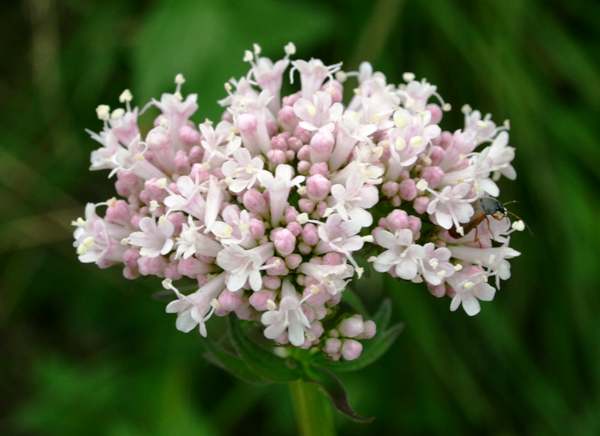
An upright perennial plant, Common Valerian spreads via stolons (underground runners) as well as by means of seeds.
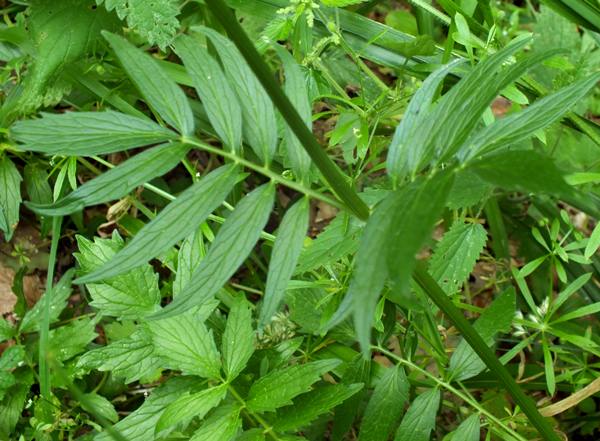
The branching stems carry opposite leaves, the lower leaves are stalked and upper leaves stalkless, and all are are pinnate with 6 to 11 lanceolate, bluntly-toothed leaflets.
Distribution
This plant is found throughout Britain and Ireland as well as most of mainland Europe and parts of Asia. Common Valerian has been introduced into North America and many other temperate parts of the world.
Habitat
Common Valerian can be found in both dry grassland and damp grassland habitats, but it does not tolerate permanently waterlogged conditions (where its shorter relative Marsh Valerian thrives).
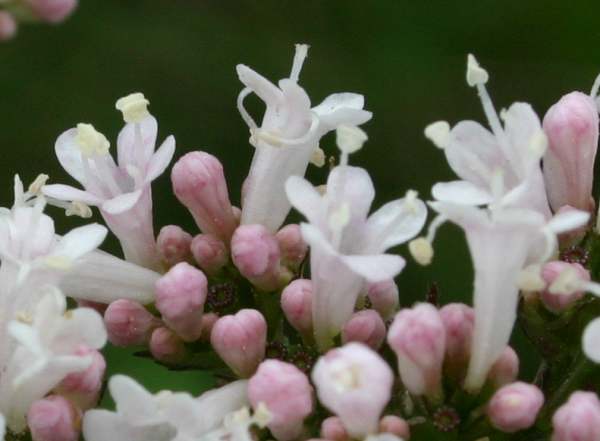
Blooming Times
In Britain and Ireland Common Valerian blooms from June until the end of August - much later than Valeriana dioica.
Uses
Sleeping potions known as Valerian were derived from this plant; they were used not only as a treatment for insomnia but also reputedly by thieves who spiked the drinks of intended victims. Valerian is still used as the source of sedatives for relaxing the central nervous system.
Etymology
The generic botanical name Valeriana comes from the Latin verb valere, meaning 'to be healthy'. In similar vein the specific epithet officinalis, literally meaning official, indicates that this plant was recognised as having valuable pharmaceutical /medicinal properties.
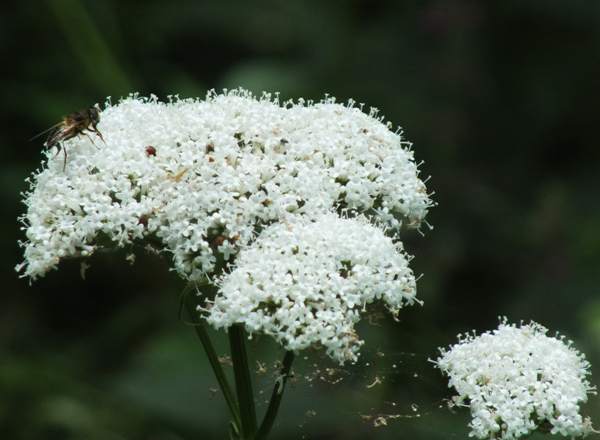
Above: The much less frequently seen pure white form of Common Valerian
Similar Species
Common Valerian is easily distinguished from the much shorter and stockier wetland wildflower Marsh Valerian Valeriana dioica. Common Valerian has looser flower clusters and paler pink flowers, all much the same size. (Marsh Valerian is dioecious: it has tiny female flowers on separate plants from the larger male flowers.)
The pictures ofthe pink form of Common Valerian shown on this page were taken at Newborough Warren national Nature Reserve in North Wales during June, while the pure white specimen was found on the edge of Hesdin Forest in northern France..
Sue Parker's latest ebook is a revised and enlarged edition of Wild Orchids in The Burren. Full details here...
Buy it for just £5.95 on Amazon...
Sue Parker's new ebook is a comprehensive and fully revised edition of her acclaimed field guide to the Wild Orchids of Wales. Full details here...
Buy it for just £5.95 on Amazon...
Please Help Us: If you have found this information interesting and useful, please consider helping to keep First Nature online by making a small donation towards the web hosting and internet costs.
Any donations over and above the essential running costs will help support the conservation work of Plantlife, the Rivers Trust and charitable botanic gardens - as do author royalties and publisher proceeds from books by Pat and Sue.